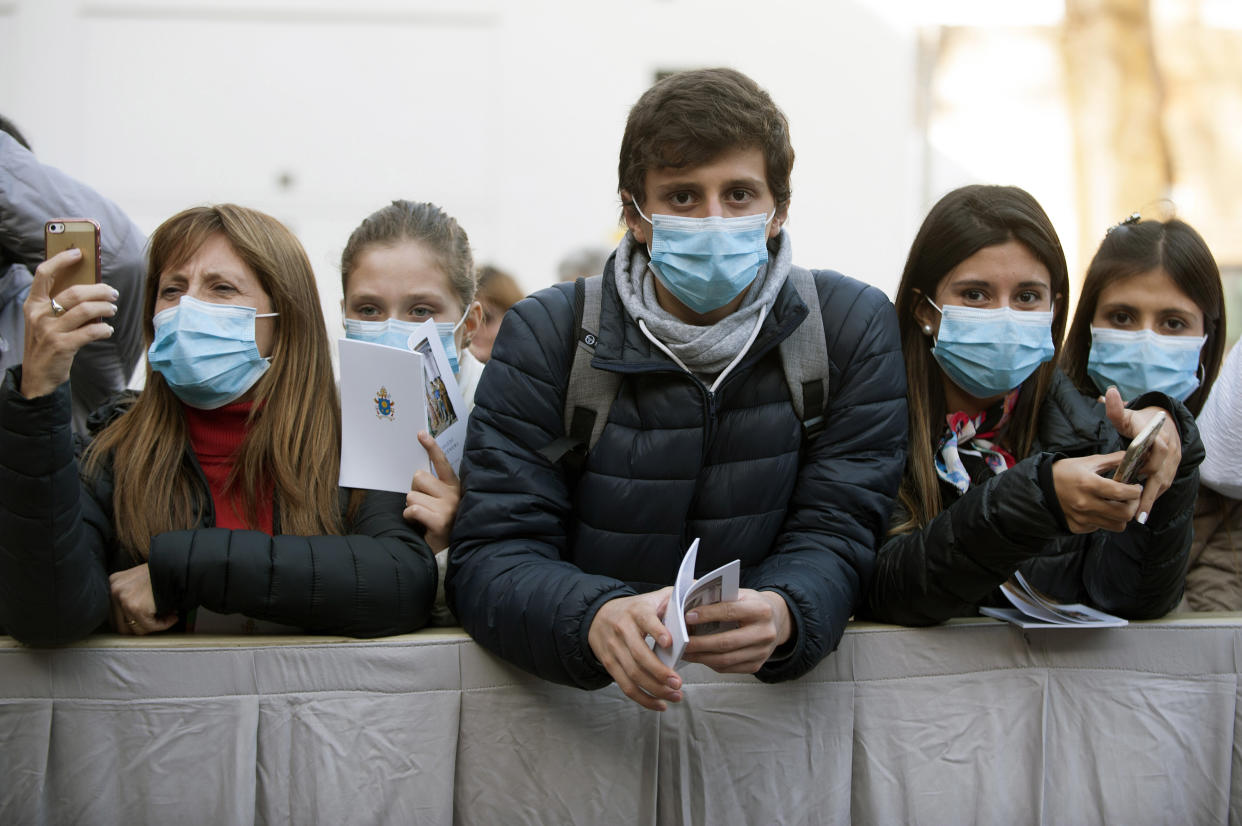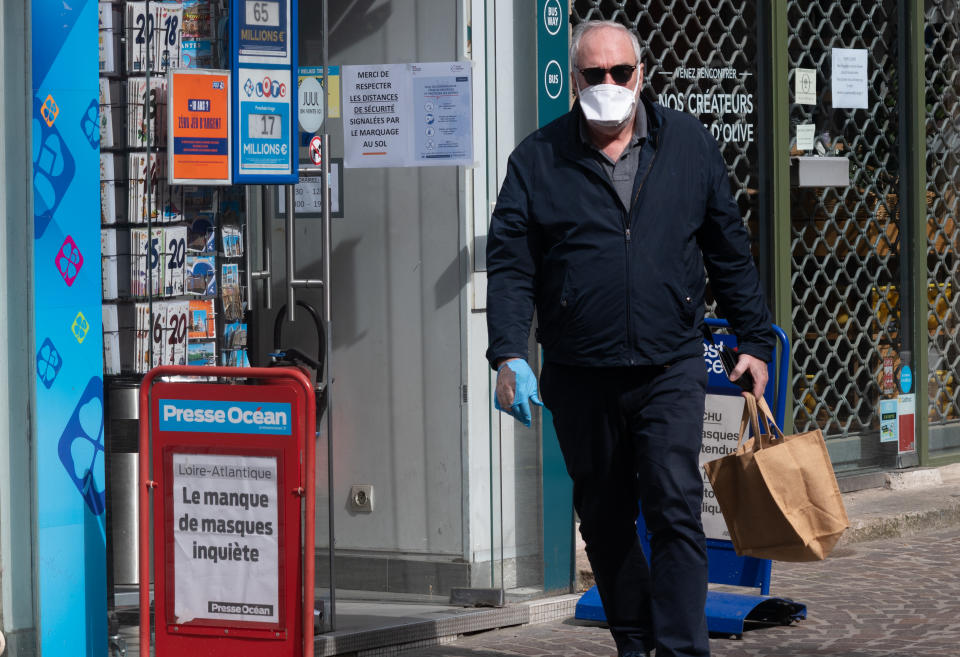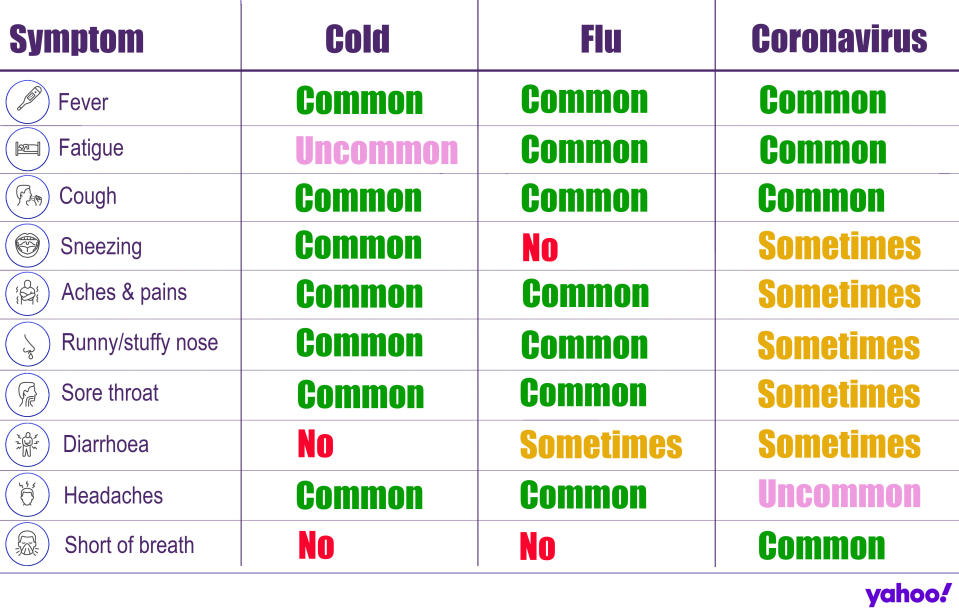Coronavirus: why social distancing is important even if you're young and healthy

Even young, healthy people should be “social distancing” amid the coronavirus outbreak, officials have said.
Boris Johnson has told all Britons to avoid social contact, ditch non-essential travel and work from home – if possible – for the foreseeable future.
The prime minister took it a step further on Friday, telling pubs, restaurants, gyms and cinemas to close.
With the new coronavirus strain virtually unheard of at the start of the year, no one has immunity to the infection.
Latest coronavirus news, updates and advice
Live: Follow all the latest updates from the UK and around the world
Fact-checker: The number of COVID-19 cases in your local area
Explained: Symptoms, latest advice and how it compares to the flu
Anyone can catch the virus, however, the vast majority of coronavirus deaths worldwide are occurring among the elderly or those with pre-existing medical conditions, like diabetes or asthma.
While the young and healthy are not a vulnerable group, officials have stressed everyone should be staying indoors if the “social distancing” strategy is going to work.

The new coronavirus is thought to have emerged at a seafood and live animal market in the Chinese city Wuhan, capital of Hubei province, at the end of last year.
It has since spread globally into more than 160 countries across every inhabited continent.
Since the outbreak was identified, more than 254,000 cases have been confirmed, of whom over 87,000 have “recovered”, according to John Hopkins University data.
Cases have been plateauing in China since the end of February, with Europe now the epicentre of the pandemic.
Italy alone has had more than 41,000 confirmed cases and over 3,000 deaths.
The UK has had more than 3,000 patients, of whom 177 have died.
Globally, the death toll has exceeded 10,000.
Why social distancing among all ages is important to combat the coronavirus
The UK is aiming to “suppress” the outbreak, “reducing case numbers to low levels and maintaining that situation indefinitely”, rather than “mitigate” it.
Mitigation focuses on “slowing but not necessarily stopping epidemic spread” by protecting the elderly and already ill.
The government’s decision was heavily influenced by a model put together by scientists from Imperial College London.
The team found suppression was the most effective way of freeing up critical-care beds, reducing pressure on the NHS.
The UK’s chief scientific adviser Professor Patrick Vallance said: “Unless everybody does social distancing, it doesn’t have an effect.
“Young people can’t ignore it thinking they’ll be fine.
“Mixing in pubs allows the disease to spread and it needs to stop in young people as well as old people.”
Early research suggests the coronavirus is mild in four out of five cases, with a relatively small number of patients requiring hospital care.
While most will develop a slight cough and fever, the infection can be passed on to someone more at-risk.
The coronavirus mainly spreads face-to-face via infected droplets coughed or sneezed out by a patient.
Experts are unsure how contagious the virus is.
All infectious pathogens have a “basic reproduction number”.
This is the number of people a patient statistically goes onto infect.
For example, a number of three means that every patient is expected to pass the virus onto three others.
Mid-February, scientists from the London School of Hygiene & Tropical Medicine estimated Covid-19’s reproduction number fluctuated between 1.5 and 4.5 before travel restrictions were introduced in Wuhan, stressing “substantial uncertainty”.
This led them to predict the outbreak may peak in China in “mid-to-late February”.
Speaking at the time, Dr Robin Thompson from the University of Oxford, said: “One proviso must be forecasting the peak of any outbreak is challenging, and so there is significant uncertainty in estimates of both the timing of the peak and the total number of cases that will occur.”
Professor David Heymann, also from the London School of Hygiene & Tropical Medicine, previously told Yahoo UK basic reproduction numbers “change daily as new information comes in”.
While the vast majority of young people escape unscathed, some will statistically fall seriously ill, like with seasonal flu.
The UK’s chief medical adviser Professor Chris Witty pointed out some young people in other parts of the world have had to be hospitalised with the coronavirus.
“We don’t want to give the impression every single young person will breeze through this,” he said.
“Some young people will have severe disease [even though they are healthy].
“This is not a trivial infection even if you are a young adult.”
Adventurer Ant Middleton faced a backlash on Friday when he told his 830,000 Instagram followers to “calm the f*** down”.
“Am I going to let some disease dictate my life? Absolutely not.
“Get out there, don’t change, f*** [the coronavirus] COVID-19!”

What is the coronavirus?
The coronavirus is a strain of a class of viruses, with seven known to infect humans.
Others include the common cold and severe acute respiratory syndrome (Sars), which killed 774 people during its 2002/3 outbreak.
The coronavirus tends to cause flu-like symptoms initially, such as a fever, cough or slight breathlessness.
While it mainly spreads via coughs and sneezes, there is also evidence it may be transmitted in faeces and urine.
Most cases are mild, however, pneumonia can come about if the infection spreads to the air sacs in the lungs, causing them to become inflamed and filled with fluid or pus.
The lungs then struggle to draw in air, resulting in reduced oxygen in the bloodstream and a build-up of carbon dioxide.
The coronavirus has no “set” treatment, with most patients naturally fighting off the infection.
Those requiring hospitalisation are given “supportive care”, like ventilation, while their immune system gets to work.
Officials urge people ward off the infection by washing their hands regularly and maintaining social distancing.




